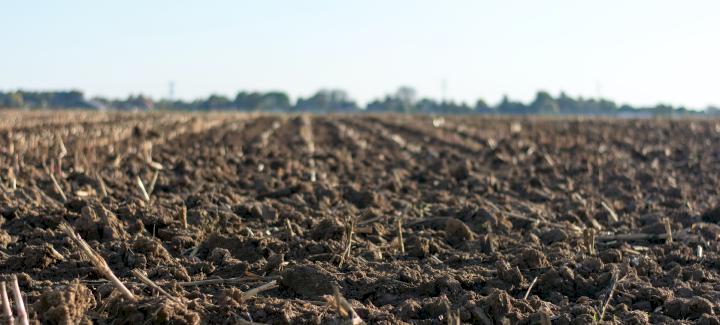
Soil compaction is an issue many growers face each year, and it’s one that can greatly impact yields the following season. In fact, Iowa State University Extension and Outreach notes yield loss due to soil compaction caused by wheel traffic can range anywhere from 10% to 20%. What makes it even more problematic is that it can last for several years if not properly managed. It’s important for growers to do what they can this fall to prevent and mitigate the problem before next growing season.
Stine® Seed Company agronomy experts urge growers to design their soil management and cropping practices to ensure the prevention of soil compaction.
“Compaction is a serious issue and can be affected by several factors, including heavy rain in a dry year or harvesting when the soil is too wet,” says Todd Schomburg, director of agronomy. “It’s critical for all growers to understand how severe these things can be for soil degradation."
Whether you still have fields left to complete or have wrapped up harvest, take note of these do’s and don’ts for preventing and managing soil compaction before winter hits.
Do assess your fields before entering with harvest or tillage equipment. Soil compaction occurs when heavy equipment is operated in fields with wet soils. Fields with no stubble, heavy tillage and compromised soil structure are at an increased risk of compaction. Extension experts agree it’s best, when possible, to wait for drier conditions before hitting the field. A proper assessment of the soil can help determine if conditions are more conducive to soil compaction. Growers can use a soil probe or shovel to test the moisture conditions by pulling subsoil samples (a minimum of 12 inches below ground) and assessing them for excess moisture. While less accurate than other tests, it’s a quick way to note the soil’s appearance and feel to determine if compaction should be a concern. Iowa State Extension provides this table for estimating soil moisture with this method. That said, employing a penetrometer is perhaps the most effective method to determine accurate soil moisture.
Don’t rush to get a crop out or start tillage if wet soils persist. If you don’t take the time to assess your fields’ moisture level properly, you’re potentially putting them at high risk of compaction and, ultimately, yield loss. Factors that lead to yield loss from compaction include, but are not limited to, improper soil drainage, denitrification, and root growth issues. If you need to get into the fields, consider harvesting or tilling around areas where wet soil is an issue.
Do find a way to reroute field traffic. Find ways to redirect grain carts and other transport equipment to an edge of the field close to the exit to lessen the compaction caused by field traffic. If you must have the grain cart follow you throughout the field, have it take the same path as the combine to avoid additional tracks.
Don’t ignore the manufacturer’s recommendations for tire size and pressure settings. Lowering inflation pressures following manufacturers’ recommendations and using wider tires help distribute the equipment’s weight more evenly. Experts from the University of Wisconsin-Extension also recommend attaching dual wheels, using machines with tracks or more uniform wheel spacing, and even reducing the load size out of the field.
Do take advantage of a dry fall to remediate compaction. Penn State Extension recommends “subsoiling” in a dry year. They note, “For maximum fracturing below the soil, use a subsoiler with large, winged points, or a paratill subsoiler with bent-leg shanks. After the subsoiling operation, prevent recompaction by managing your field operation to dry soil conditions, keeping axle loads, and contact pressure low.”
Don’t rely on tillage alone. Tillage should be considered on a case-by-case basis. Light tillage can help break up some compaction in the topsoil, and a deeper tillage may be necessary to break up the subsoil. That said, tillage shouldn’t be the only solution in your plan. Growers should also consider planting a cover crop in combination with tillage and employing the other best practices discussed in this article for a complete mix of tactics to help clear up compaction.
Do enlist the assistance of a local agronomist or field extension expert for guidance on best practices for avoiding compaction. Even if you’ve wrapped up harvest, they can advise you on how you can navigate compaction this fall through the next planting season.
To learn more best management practices for your soil this fall, contact your local Stine sales rep or regional sales agronomist.
Related Articles
-

Stine® to offer Syngenta’s Victrato® soybean seed treatment in 2026
December 2025 in Agronomy
-

Use Stine’s XP® seed treatments to prevent early injury to your crops
December 2025 in Agronomy
-

Understanding Stine’s enhanced oil profile soybeans
December 2025 in Agronomy
-

Soil sampling sets the stage for spring
November 2025 in Agronomy



